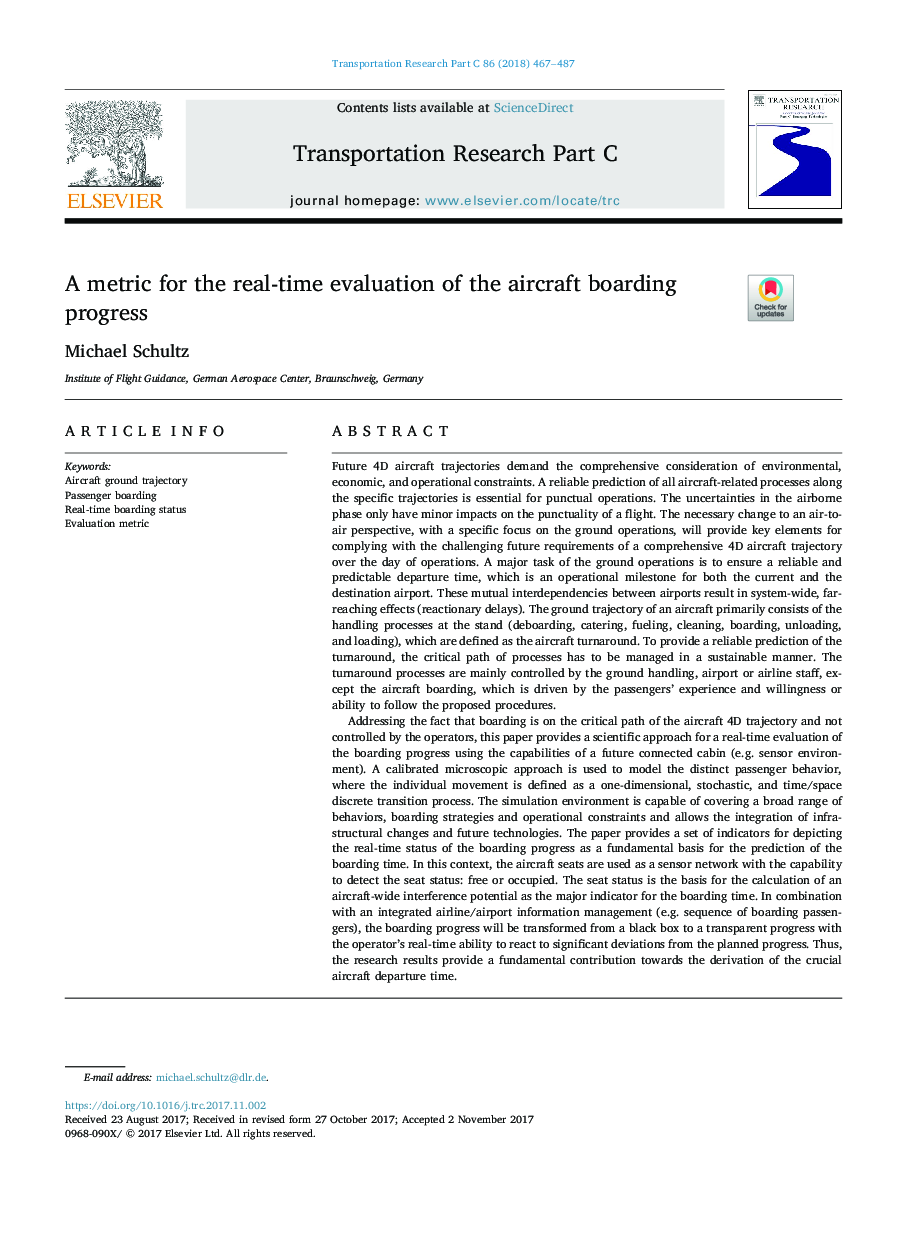| Article ID | Journal | Published Year | Pages | File Type |
|---|---|---|---|---|
| 6936264 | Transportation Research Part C: Emerging Technologies | 2018 | 21 Pages |
Abstract
Addressing the fact that boarding is on the critical path of the aircraft 4D trajectory and not controlled by the operators, this paper provides a scientific approach for a real-time evaluation of the boarding progress using the capabilities of a future connected cabin (e.g. sensor environment). A calibrated microscopic approach is used to model the distinct passenger behavior, where the individual movement is defined as a one-dimensional, stochastic, and time/space discrete transition process. The simulation environment is capable of covering a broad range of behaviors, boarding strategies and operational constraints and allows the integration of infrastructural changes and future technologies. The paper provides a set of indicators for depicting the real-time status of the boarding progress as a fundamental basis for the prediction of the boarding time. In this context, the aircraft seats are used as a sensor network with the capability to detect the seat status: free or occupied. The seat status is the basis for the calculation of an aircraft-wide interference potential as the major indicator for the boarding time. In combination with an integrated airline/airport information management (e.g. sequence of boarding passengers), the boarding progress will be transformed from a black box to a transparent progress with the operator's real-time ability to react to significant deviations from the planned progress. Thus, the research results provide a fundamental contribution towards the derivation of the crucial aircraft departure time.
Keywords
Related Topics
Physical Sciences and Engineering
Computer Science
Computer Science Applications
Authors
Michael Schultz,
